Affiliate links on Android Authority may earn us a commission. Learn more.
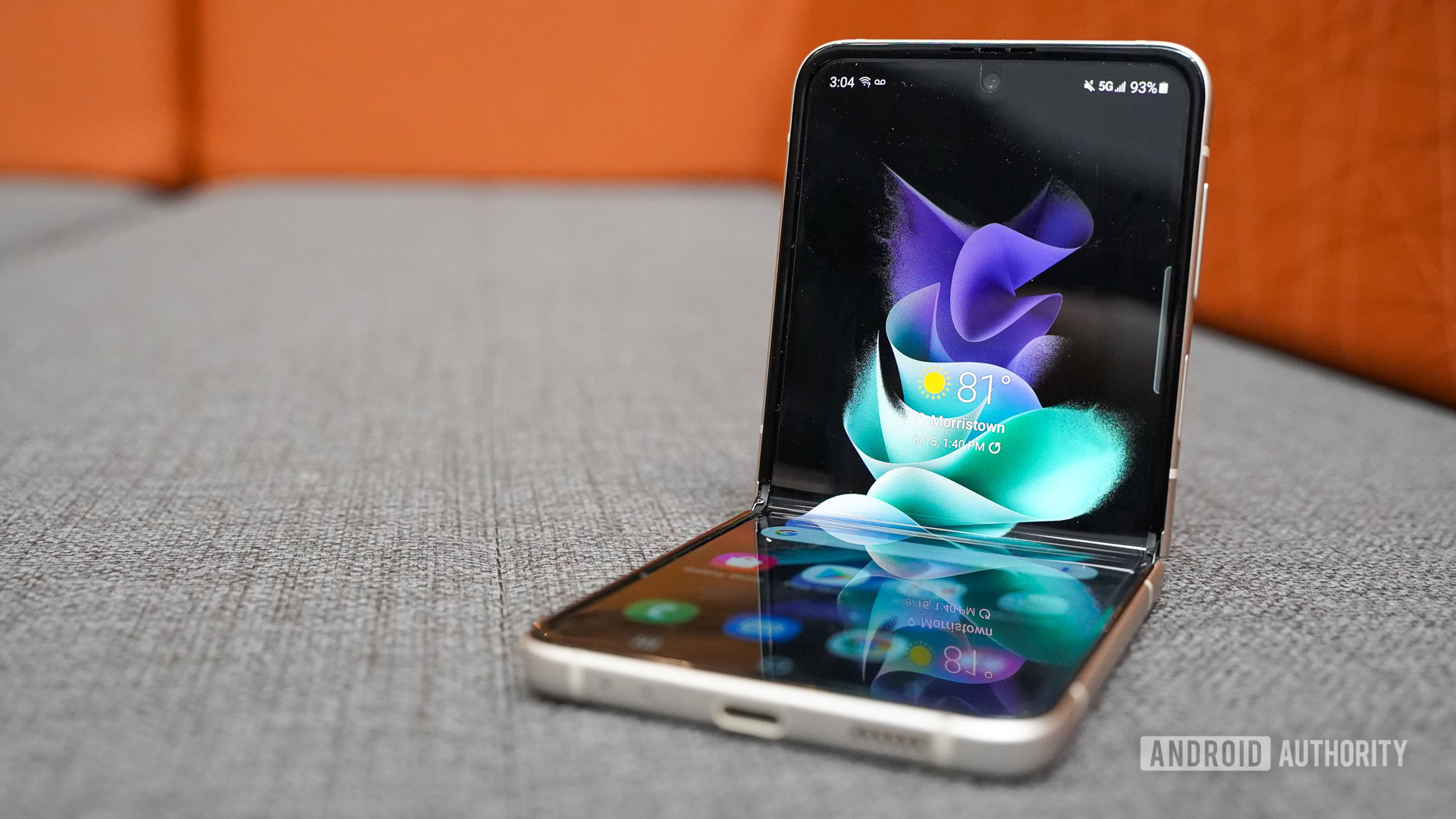


Samsung Galaxy Z Flip 3
MSRP:
What we like
What we don't like
Our scores

Samsung Galaxy Z Flip 3
The Samsung Galaxy Z Flip 3 marks a big shift in strategy for Samsung’s foldable phone ambitions. The company promised it would make its foldable devices available to more people and it’s made good on its word.
One way to do that is by dropping prices. The Galaxy Z Flip 3 shaves a significant ~$400 off the cost of the Z Flip 5G and is a whopping $800 cheaper than Samsung’s other foldable, the Galaxy Z Fold 3. With its lower price tag, the Z Flip 3 is a foldable phone that sits in the same price range as many standard flagships. That makes it attainable to a larger number of consumers.
Now in its (sort of) third generation, the Z Flip 3 takes everything that we liked about the original and applies tasteful, thoughtful upgrades that wholly improve the experience of using the phone day in and day out — without sacrificing the character of the original.
Has Samsung dialed in the right combination of form and functionality to convince you that foldables are worth a try? Find out for yourself in Android Authority‘s Samsung Galaxy Z Flip 3 review.
Update, August 2022: We’ve updated this review by adding in an FAQ section that answers the most asked questions about the device. We’ve also listed a few new competitors that are available on the market and more.
What you need to know about the Samsung Galaxy Z Flip 3
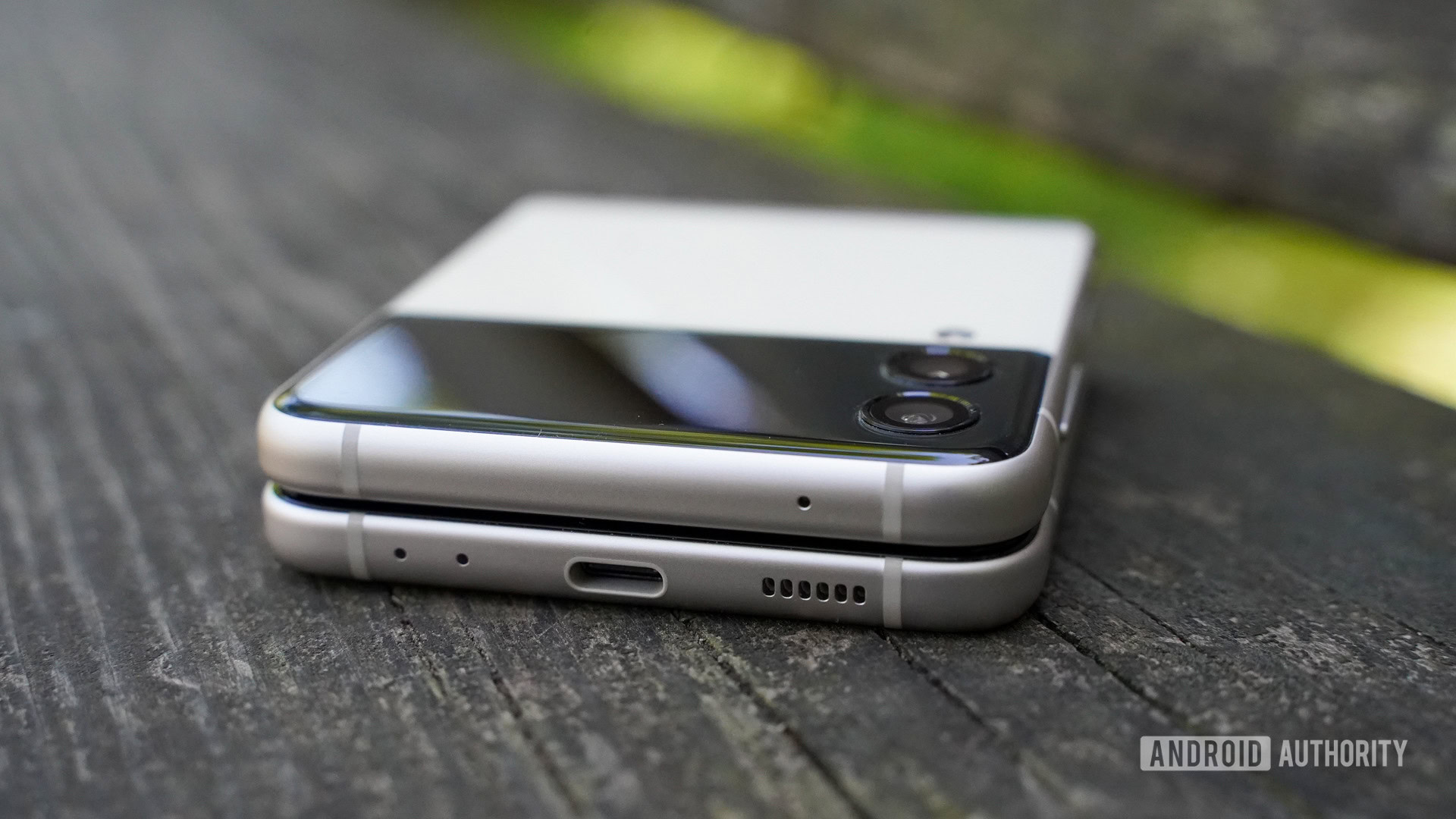
- Samsung Galaxy Z Flip 3 (8GB/128GB): $999 / €999 / £949
- Samsung Galaxy Z Flip 3 (8GB/256GB): $1,049 / €1,049 / £999
The Galaxy Z Flip 3 is Samsung’s smaller, more approachable, and more affordable folding phone. Where the Z Fold 3 is a normal-sized device that opens up to reveal a tablet-sized screen, the Z Flip 3 is a normal-sized phone that bends in half and reduces the footprint to something more pocketable. We wouldn’t call it a poor man’s foldable, because a grand ain’t cheap, but it absolutely could act as a gateway into the world of folding devices, thanks in no small part to its reduced price and the simpler clamshell form factor.
The original Z Flip and the Z Flip 5G were priced at around $1,400 at launch. The base model Z Flip 3 is available for just $999, a hefty plunge from the previous generations. The 256GB model is just $50 more, making it a no-brainer for those who need the extra storage. These prices line the Z Flip 3 up with the likes of the Galaxy S22 series, the Apple iPhone 13 Pro, and other flagship phones in the $1,000 space.
Related: The best Samsung phones
The phone has been on sale since August 2021, but Samsung is still offering aggressive trade-in deals and discounts on the Z Flip 3 to those who order the phone online. It would be easy to drop the price of the Z Flip 3 to about $350 with the right trade-in.
The phone is available in two storage configurations and multiple colors. If you order the base model, you can select between Cream, Phantom Black, Lavender, Gray, White, and Pink. These last three are exclusive to Samsung’s website. The 256GB model is available in Phantom Black, Gray, White, and Pink. Black is the only finish that’s matte — all the rest are glossy. There’s also the Bespoke Edition, which allows you to customize the look of the phone for $100 more. The box includes just a cable and a SIM tool; there’s no charger.
How is the hardware?
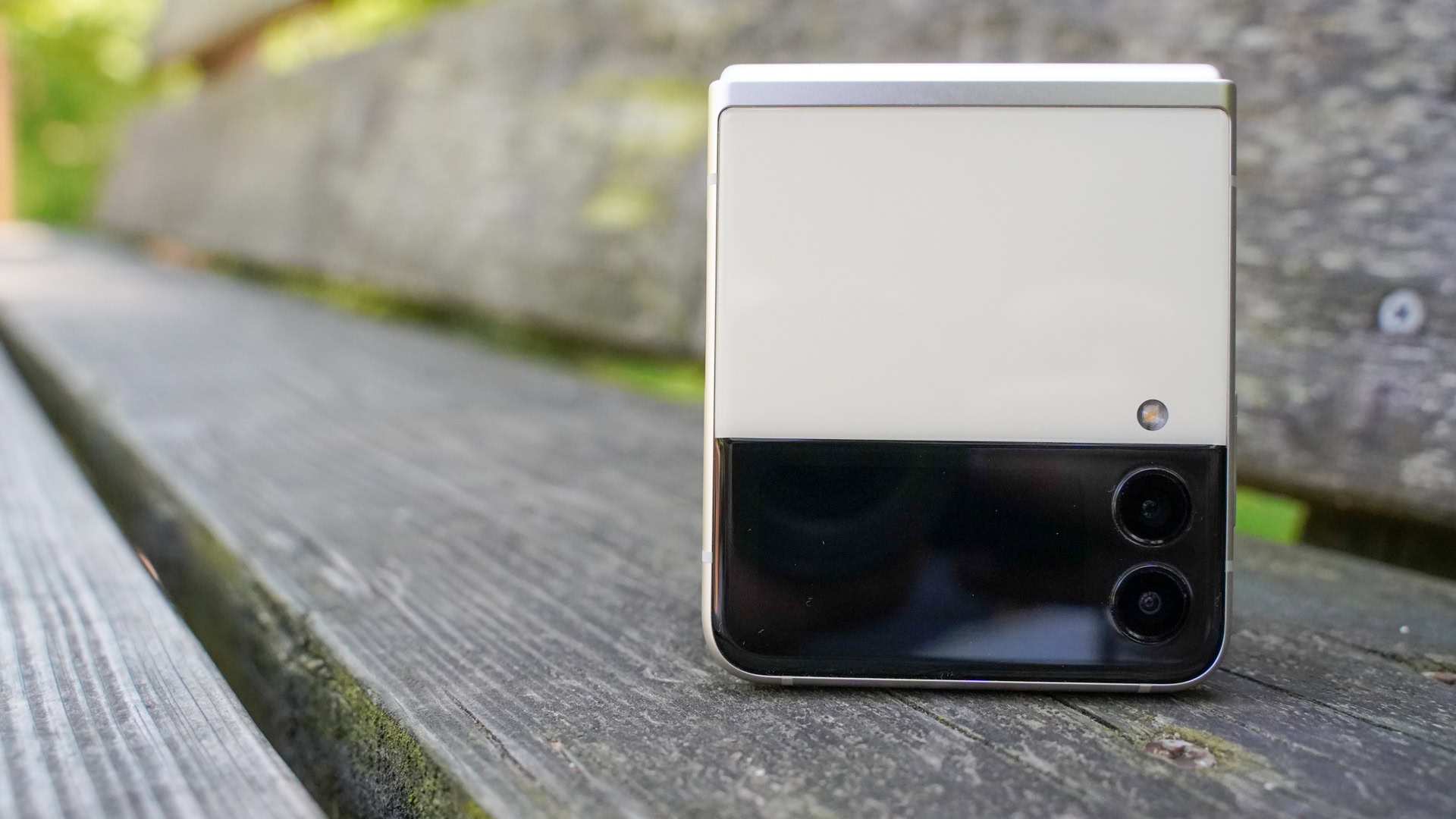
Samsung gave the Z Flip 3 the same treatment it gave the Z Fold 3 — it overhauled the chassis inside and out with new materials and updated the look so the two phones are more closely aligned in appearance. From a hardware perspective, the Z Flip 3 is leagues better than its predecessors. It is worth pointing out that the original Galaxy Z Flip and the Z Flip 5G were nearly identical devices. The chassis and most specs were the same, save for an upgraded processor and, of course, the addition of 5G to the latter. Otherwise, the phones were carbon copies, which means the differences between them and the new Z Flip 3 are significant.
The Z Flip 3's hardware is leagues better than its predecessors.
First up, the materials. The Z Flip 3 adopts the same Armor Aluminum and Corning Gorilla Glass Victus as the Z Fold 3. These updates instantly make the Z Flip 3 tougher than the outgoing phones. Samsung says its Armor Aluminum is stronger than 7,000 series aluminum, and Gorilla Glass Victus is the best Corning has to offer at the moment, with improved break and scratch protection. Samsung also changed the shape of the glass panels, which were curved on the original Z Flip. The Z Flip 3 glass is flattened out, with simpler rectangular panels that slot into the metal frame. The overall shape has been streamlined a bit. Samsung rounded off the corners to a small degree and the metal frame itself has a gentler contour to it. The Z Flip 3 comes off as blockier looking than its predecessors, but the slightly reduced dimensions help keep it a fairly trim device even when closed.
The hinge is as strong as ever. Samsung ported over the basic hinge design from the older phones, which means the spine disappears completely when the phone is opened all the way. The hinge will hold any angle you set. This lets the Z Flip 3 sit like a tiny makeshift laptop and gives you the freedom to use the phone as its own tripod when shooting pictures. It takes work to open the phone one-handed because there’s no spring in the hinge. You can do it but it feels awkward. It is, on the other hand, rather easy to flip the phone shut one-handed. This is more satisfying than it should be.
Samsung was sure to improve the durability of the display as well. The screen is covered with a stretchable PET (polyethylene terephthalate) film that boosts its strength by as much as 80%. It feels more robust under your thumb. This really helps make the Z Flip 3 a less fragile piece of hardware. Shame there’s still that crease.
The phone has earned an IPX8 rating for protection against water.
The phone has earned an IPX8 rating for protection against water. That’s a huge upgrade and really increases the Z Flip 3’s appeal. As with the Z Fold 3, the phone is not protected against dust, only water. The IPX8 rating means the phone can sit in up to 1.5m of water for up to 30 minutes. It can certainly handle some sweat or rain — just be careful to keep it free of dust and dirt.
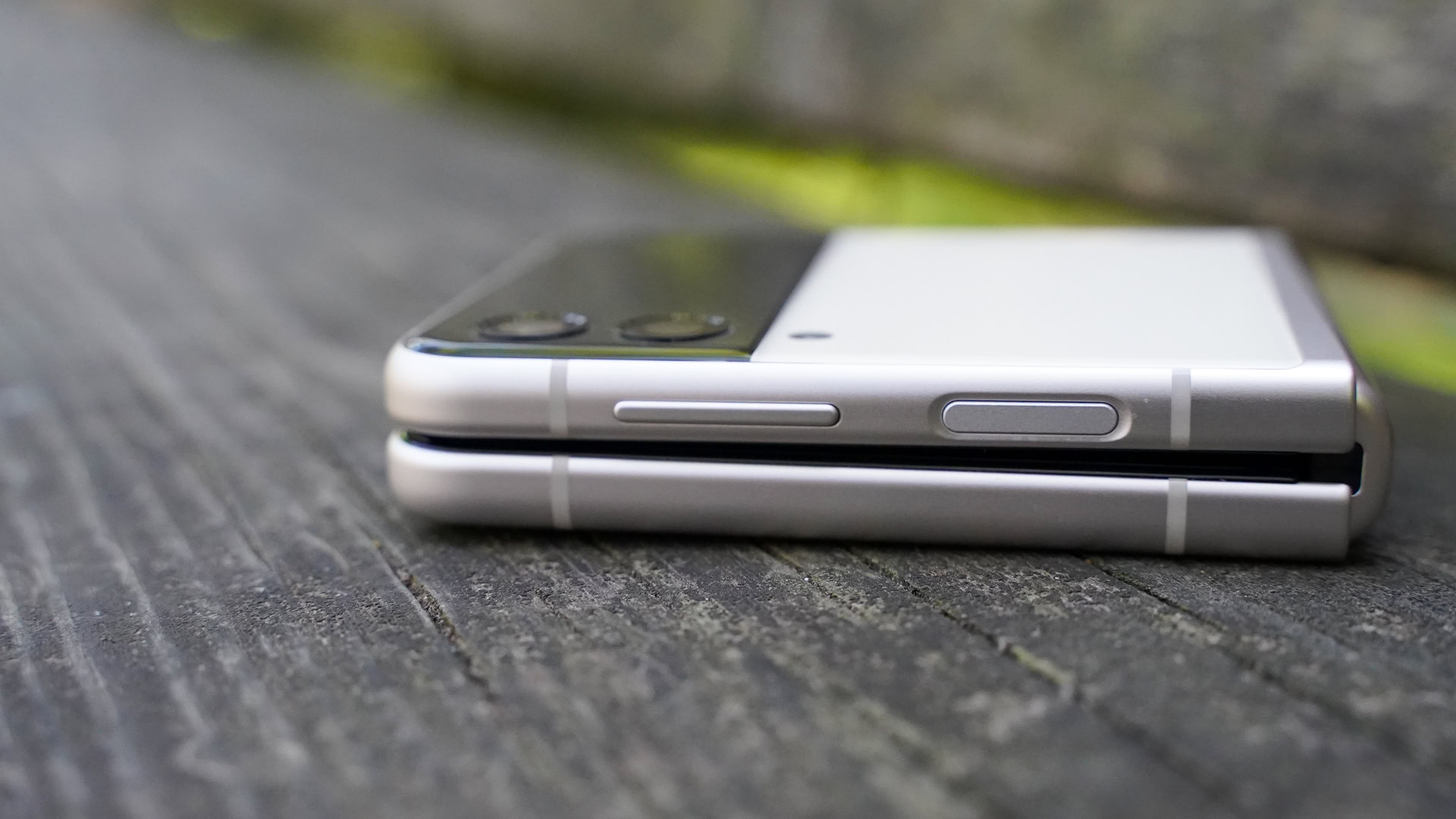
Samsung kept the controls and other functional elements easy to access. The phone features a combo screen lock button/fingerprint reader on one side. It is flush with the frame, which makes it hard to locate in a hurry sometimes, but the reader is fantastically quick and accurate once trained. The volume toggle has excellent travel and feedback. The phone relies on USB-C for charging and data transfer. The SIM slot accommodates a single SIM card but does not support expandable memory cards. An eSIM is also built into the phone.
You get stereo sound with Dolby Atmos thanks to a pair of speakers, which is a nice upgrade over the mono sound of previous models. One speaker is embedded in the phone’s earpiece and the second is a downward-firing affair on the phone’s bottom edge. The Z Flip 3 doesn’t enjoy quite the same crisp and balanced sound as the Z Fold 3, which dedicates more real estate to the speakers, but it still does well. If anything, mids and highs tend to run into each other a bit. Even so, the Z Flip 3’s speakers are absolutely fine for a phone in this price category and it’s adequately loud.
Samsung made all these changes without altering the basic use case of the phone. The Z Flip 3 is a regular-sized slab that bends in half to create something more portable. At 4.2 inches across the diagonal when folded, the Z Flip 3 is much more pocket-friendly than its 6.7-inch screen would otherwise entail. The reduced footprint genuinely makes toting the phone around less of a chore. If your pocket space is limited, the Z Flip 3 could be the phone you need. Also — and this might matter more to some people than others — it’s just fun to use.
How’s that bendy display?
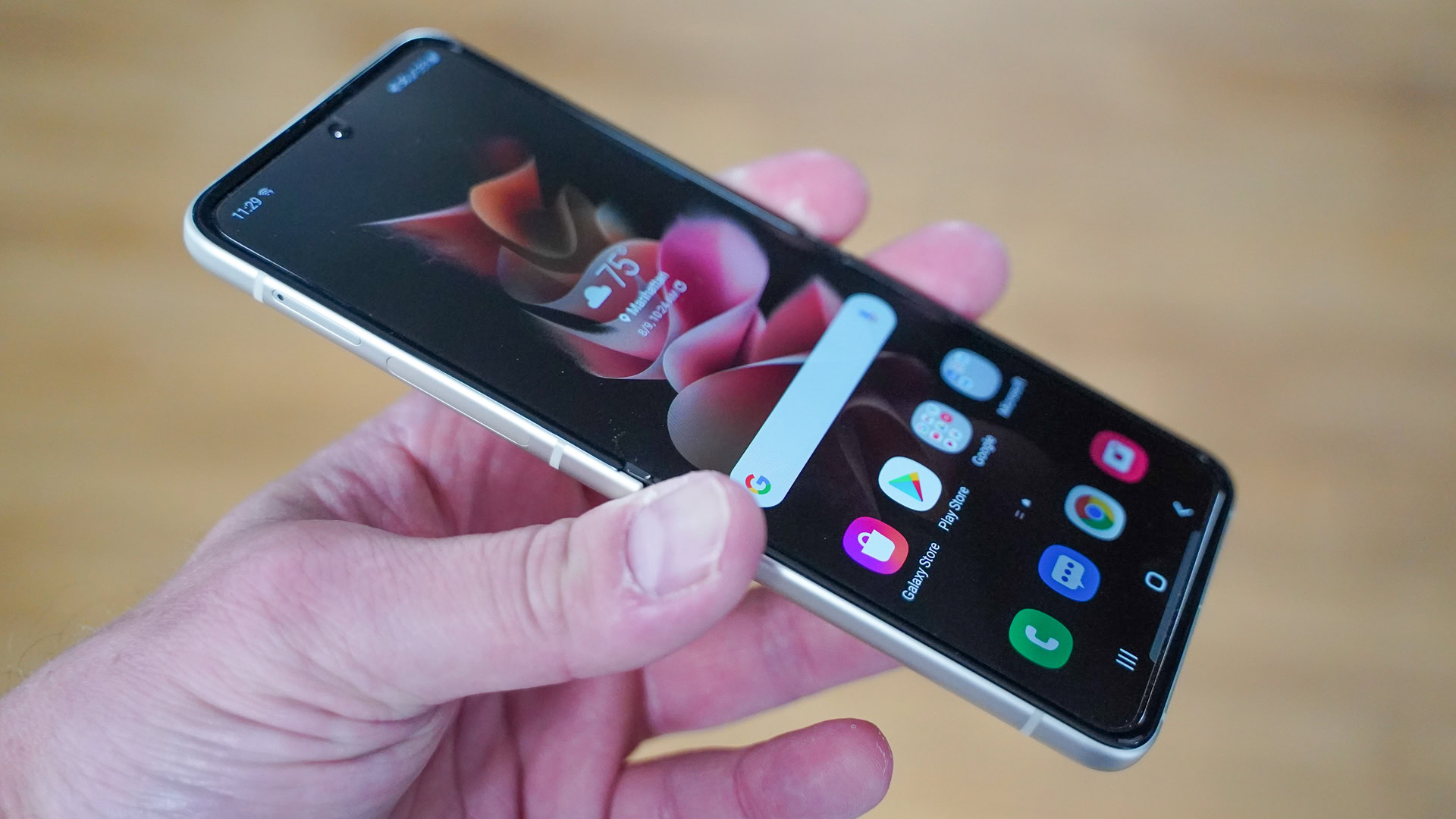
The main screen is largely carried over from the Z Flip 5G save for a couple of updates. First, Samsung strengthened the materials protecting the screen, and second, it boosted the refresh rate to 120Hz.
As noted above, the 6.7-inch Dynamic AMOLED Infinity Flex Display features a new protective layer that bolsters durability. If you ever had an occasion to try the original Z Flip, you’ll immediately notice the improved feel of the Z Flip 3’s screen. Similar to the Z Fold 3, the Z Flip 3’s outer layer is incredibly reflective, which leads to a higher-than-normal amount of glare from time to time.
The adaptive 120Hz refresh rate really makes an impression.
It has the same 2,600 x 1,080 resolution as the Z Flip 5G with a pixel density of 425ppi and looks as sharp and colorful as ever. I had no real trouble using the phone outdoors. The adaptive 120Hz refresh rate really makes an impression. The screen’s shape is tall and narrow thanks to the 22:9 aspect ratio and it’s a natural place to scroll through your social feeds, boosted by that extra smoothness. The adaptive refresh rate, which changes depending on what’s on the screen, can be set to the standard 60Hz if you want to conserve battery life.
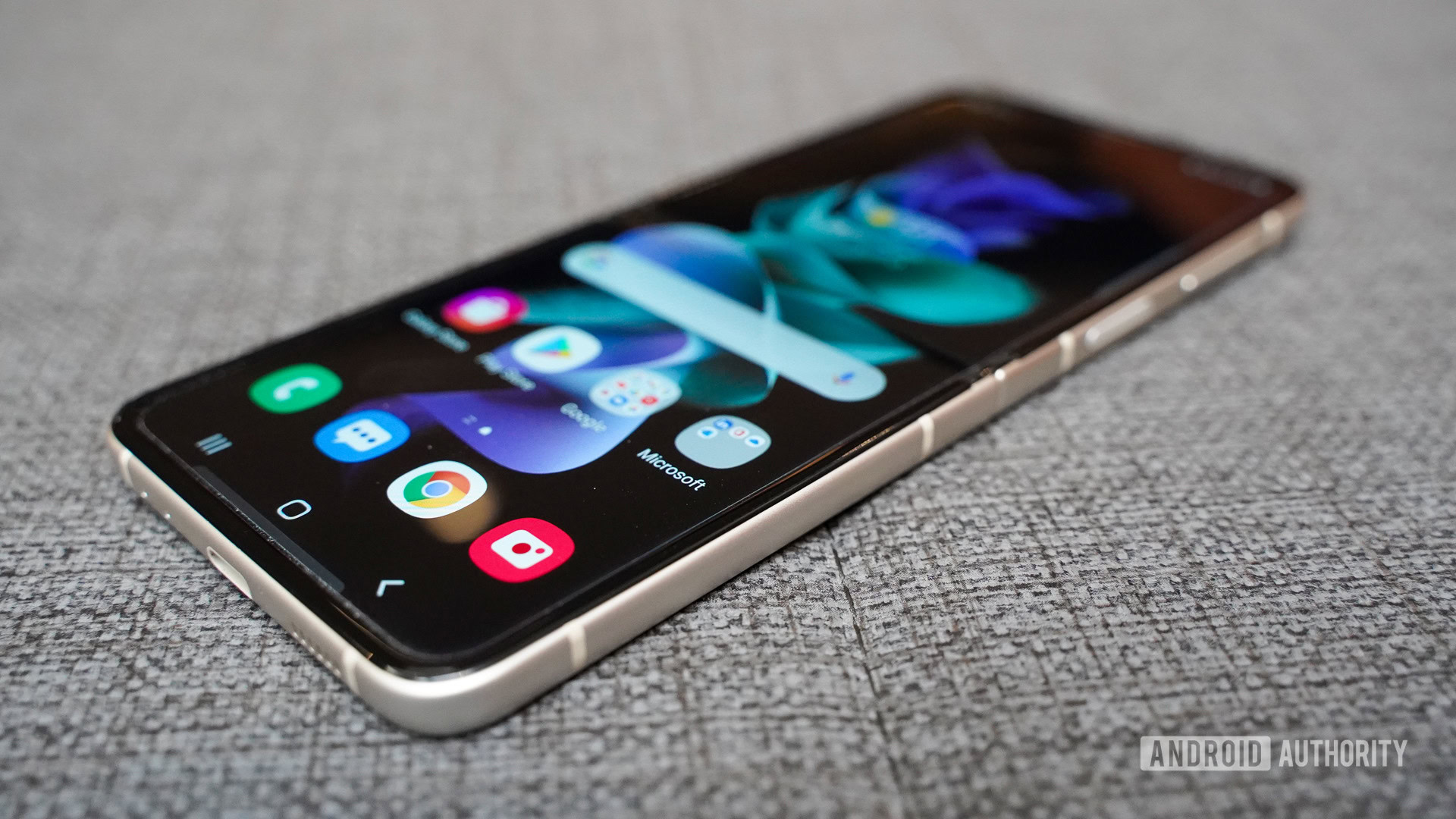
On the downside, the fold in the middle of the screen is still plainly visible to the naked eye whether the display is on or off. It’s also easy to locate by feel. OPPO, conversely, was able to engineer its impressive Find N foldable without a visible crease.
While the crease may still put some people off, for a piece of glass that bends in half, the Galaxy Z Flip 3’s display does a really fine job. The only unknown is just how well it will last over the years.
What can you do with the new cover screen?
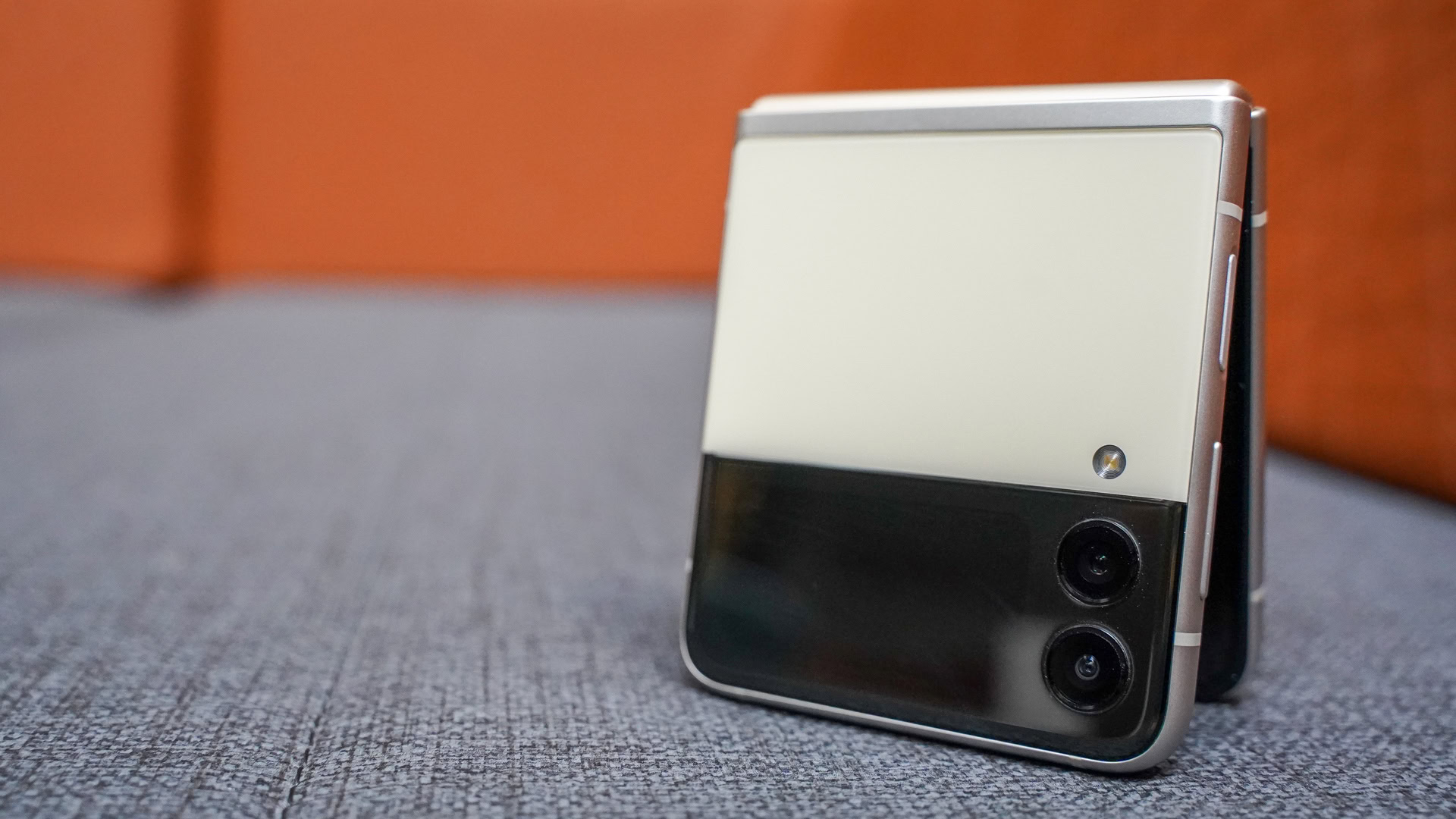
A whole lot more than you could with the old one. The older Galaxy Z Flip phones featured a small 1.1-inch strip that did little more than show the clock and flash notifications at you. The Z Flip 3 features a fully upgraded 1.9-inch Super AMOLED panel that boasts way more functionality thanks to a host of swipe gestures.
By default, the Cover Screen acts as your always-on display. Tapping the glass will reveal the clock, date, and battery level, though you can set this to always be on if you prefer. When the phone is locked all you can do is view the clock. Unlock the phone via the fingerprint reader and you have access to a handful of widgets.
Swipe back and forth to see your notifications, access Samsung Pay, and adjust the brightness and mute level. Keep swiping and you’ll discover weather, calendar, music, timer, alarm, and Samsung Health widgets. These widgets all provide a modicum of functionality, allowing you to do more when the phone is closed. The notifications are particularly helpful, as you can open emails and text messages and scroll through the content therein. You can’t respond from the Cover Screen; for that, you have to open the phone up.
The Cover Screen also supports a camera preview functionality so you can use the phone’s main cameras to take selfies or allow those you’re photographing to see the shot before you snap it. The view within the narrow confines of the Cover Screen isn’t ideal, but it’s something. I like that the tool allows you to swipe between the standard and wide-angle cameras, as well as capture video despite the phone being shut. All it takes is a quick double press of the power button to get started.
Motorola’s Razr 5G supports similar functionality on its outer display, and it was critical that Samsung updated its Cover Screen with these tools. They aren’t perfect, but are just powerful enough to prevent you from constantly opening the phone — which saves some time and some battery life.
Are the cameras up to snuff?
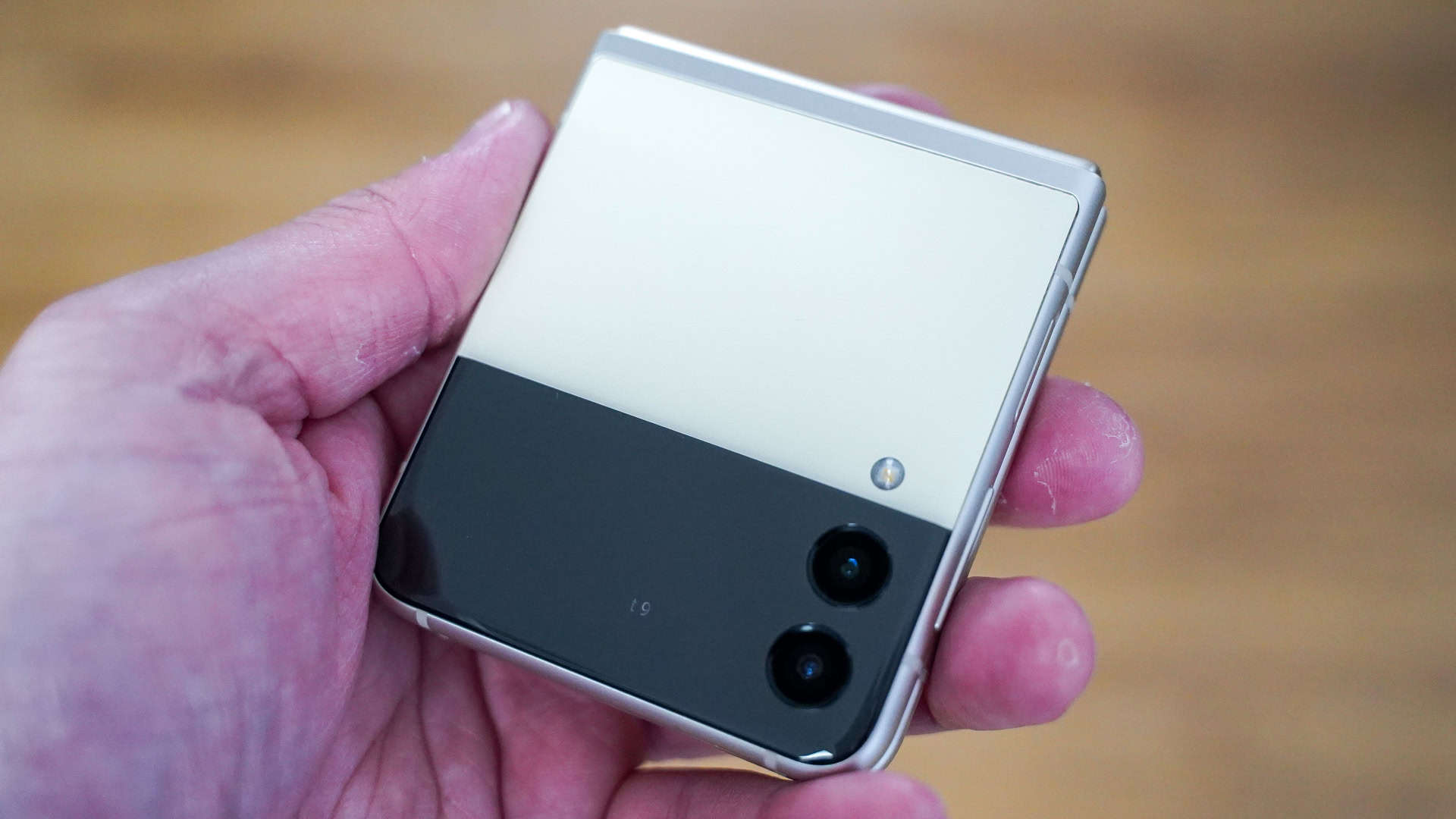
Samsung carried the camera hardware over from the Z Flip 5G, which is disappointing. The company largely did the same with the cameras on the Z Fold 3.
The Z Flip 3 has three cameras. There are two 12MP shooters on the outside, which include a standard lens with Dual Pixels and OIS at f/1.8 and an ultrawide lens at f/2.2. Samsung says it improved the glass covering these lenses with tougher, clearer stuff than what it used on the Z Flip 5G. The user-facing camera, which is visible in the punch hole at the top of the display, is a 10MP job at f/2.4.
Check out: The best camera phones you can get
Samsung didn’t make any changes to its camera app, which is identical to that of the Galaxy S22 series and Z Fold 3. It includes core shooting modes such as photo, video, portrait, and Single Take, as well as a slew of secondary modes including night mode and slow motion. The controls are simple and straightforward and it’s easy to interact with advanced features, such as the outer screen preview, thanks to obvious controls.
The camera does a good enough job, though it stops well short of being excellent.
The camera itself does a good enough job, though it stops well short of being excellent. Images we captured with the Z Flip 3 were about on par with those snagged from the Z Fold 3.
Related: Samsung Galaxy Z Fold 3 vs Z Flip 3 camera shootout
You can see in the daytime shots below that basics such as focus, white balance, and exposure are on point. Color is, in typical Samsung fashion, pushed a bit. The auto HDR tool, which is turned on by default, truly helps balance out images that might otherwise lose detail to shaded areas. In that respect, we’re happy. It was, however, too easy to spot noise in the pictures from a camera at this price point.
The colors are a touch less vibrant when shooting after the sun sets. During twilight, the HDR wasn’t quite able to keep up with the shadows. Further, the shots taken from under the bridge are very noisy.
Pictures shot in the dark or near dark were mixed in quality. In the samples below, the two buildings were captured with the camera in regular mode while the river scene needed night mode to pull out all those details. It’s crazy how much the camera was able to “see” in the dark. The samples from the Z Flip 3 show more noise than similar samples taken with the Z Fold 3; neither compares to the low-light capabilities of the Galaxy S22.
Zooming is mostly accomplished via digital crop. The ultrawide camera handles shots at 0.5x. The color and exposure of daytime wide-angle shots was pleasing enough, but there was some distortion in the corners. The main lens handles everything else, which means up to 10x zoom. As expected, zooming up to about 4x is fairly usable, but anything beyond that is hardly worth capturing. Zooming out to the max leaves you with rough results.
Portraits and selfies are decent. When shooting portraits, the camera does a fair job of edge detection and delivers fairly even blurred backgrounds. The inner selfie camera captures regular shots and portraits alike. There’s also a toggle to switch between ultrawide selfies so you can include more people or more background in the shot. Edge detection wasn’t as clean and the backgrounds were sometimes over blurred, making them look unnatural. There is also some noticeable noise from the selfie camera.
One thing worth pointing out: selfies taken with the exterior Cover Screen are limited in aspect ratio to 1:1. Samsung said it made a conscious decision to keep the aspect ratio this way so people get results that look like the preview. There’s no way to change the aspect ratio of these shots.
Video capture is possible up to 4K resolution at 60fps. That’s a pretty standard offering, though it falls short of the 8K capabilities offered by most competing $1,000 flagships. The Z Flip 3 shoots solid video that captures fine detail, motion, and color. The footage we captured looked very good when blown up on a high-resolution monitor.
What about battery life?
Battery capacity is another spec that Samsung carried over from generation to generation. The Z Flip 3 has a split 3,300mAh battery with half living in each side of the phone. If the phone has an Achilles heel, this is it.
Used sparingly, the phone can push through a full day. But that means taking full advantage of the Cover Screen to view notifications rather than flipping the phone open. Screen-on time with the display set to the default 120Hz adaptive mode was just over four hours. That’s far behind the six-hour minimum expected from modern flagships in the same price range.
Charging speeds are on the slow side for a $1,000 phone.
Samsung gives you plenty of ways to optimize the phone’s power consumption. First and foremost, you can dial the display back to a consistent 60Hz, as well as control brightness, backlight duration, and the like. You might also choose to kill off background apps or take advantage of similar power-saving features. These things help, but not drastically.
Charging speeds are on the slow side for a $1,000 phone. Wired charging is limited to just 15W, and there’s no charger in the box so you’ll have to supply your own. On the flip side, the battery is rather small for a flagship and it doesn’t take as long to charge as a 4,000mAh or 5,000mAh battery would. The phone powered to full from zero in one hour 40 minutes. That’s really not that bad.
Related: The best phone charging accessories
Wireless charging is slower at 10W and it definitely feels slower. Charging the battery from zero to full took more than two hours wirelessly. Like the Z Fold 3, reverse wireless charging is limited to 4.5W, which is rather pokey and best limited to emergencies given the lower overall capacity of the battery itself.
Bottom line here: The Z Flip 3 doesn’t last as long as regular flagships do in this price tier, but it doesn’t do badly, all things considered. You’ll simply have to pay attention to the battery level a bit more.
How powerful is it?
The Z Flip 3 packs the Qualcomm Snapdragon 888 with a respectable 8GB of RAM and 128GB or 256GB of UFS 3.1 storage. The Snapdragon 888 was the top-performing chip of 2021 for Android devices. Qualcomm has since replaced the 888 with the Snapdragon 8 Gen 1/Snapdragon 8 Plus Gen 1 for 2022 devices, but the Snapdragon 888 still packs plenty of punch.
As an everyday device, the Z Flip 3 ran perfectly. Every experience with the phone was quick and speedy. Apps opened in a blink, screens transitioned smoothly, and nothing slowed the phone down. It was able to multitask with two apps open with nary a stutter. Games downloaded to the phone were great fun and ran at their best.
The Z Flip 3 put up nearly identical benchmark scores as the Z Fold 3, which meant it did well on CPU tests but was a little slower when the GPU was rated. It’s still well within the margin of 2021’s best devices, though it falls short of the phones we’ve seen so far in 2022. The Z Flip 3 managed to best a few phones on Android Authority‘s homegrown Speed Test G benchmark, which it ran in one minute 18 seconds. That’s quicker than the Galaxy S21 did with the same processor.
See also: Here are the best Snapdragon 888 phones you can buy
Samsung was sure to include the latest wireless specs, which means sub-6GHz and mmWave 5G, as well as Wi-Fi 6E, and Bluetooth 5.2. Our review unit included a T-Mobile SIM card and we were able to test it out on T-Mobile’s mid-band 5G network in the greater New York City area. Download speeds were impressive across the board, but uploads lagged a bit behind what we saw on the Z Fold 3. The phone remained connected to T-Mobile’s 5G network the entire time we tested it. The Z Flip 3 also supports AT&T and Verizon’s 5G networks in the US, as well as various 5G networks around the world.
Anything else?
- Software: The phone shipped with Android 11 and Samsung’s One UI 3.1. One UI itself is the same version that’s available on the Z Fold 3, Galaxy S21, and other modern Galaxy phones. It’s a bit heavy-handed but offers plenty of flexibility when it comes to customization. The good news is that Samsung has already updated the Z Flip 3 to Android 12 and One UI 4. What’s more, Samsung has committed to offering four years of system updates and five years of security updates for the Z Flip 3, making it among the most supported phones available.
- Multitasking: The Z Flip 3’s 22:9 aspect ratio display makes it great for multitasking. It handily supports two app windows at the same time, which are dead simple to launch via the Edge Panel tool. You can create app pairs and quickly launch two apps at a time, such as Gmail and the Calendar, or YouTube and Chrome.
- Flex Mode: Like the Z Fold 3, the Z Flip 3 supports Flex Mode. This tool lets you launch a separate control panel on half the screen when you have it set as a tiny laptop. Some included apps, such as the camera and YouTube, support this tool natively. Others from third-party developers have to be forced into it via the settings menu. It’s most useful with the camera app since it’s so easy to set the phone down somewhere for a timed shot.
- S Pen: The Samsung Galaxy Z Flip 3 is not compatible with any of Samsung’s S Pen stylus accessories, not even the new S Pen Pro, which supports a handful of legacy Galaxy Note and Galaxy S phones. No stylus for you!
Samsung Galaxy Z Flip 3 specs
| Samsung Galaxy Z Flip 3 | |
|---|---|
Displays | Exterior: - 1.9-inch AMOLED - 512 x 260 resolution at 303ppi - Gorilla Glass Victus Interior: - 6.7-inch AMOLED - 120Hz refresh rate - 2,640 x 1,080 resolution at 425ppi - Foldable display covering |
Processor | Qualcomm Snapdragon 888 |
RAM | 8GB |
Storage | 128GB or 256GB UFS 3.1 No expandable storage |
Power | 3,300mAh battery 15W wired charging 10W wireless charging 4.5W reverse wireless charging No charger in box |
Cameras | Exterior: - 12MP wide, 1.4μm, OIS, Dual Pixel AF, ƒ/1.8 - 12MP ultrawide, FF, 1.12μm, ƒ/2.2 Internal: - 10MP, FF, 1.22μm, ƒ/2.4 |
Audio | Stereo speakers Dolby Atmos support No 3.5mm headphone port |
SIM | Single nano-SIM tray eSIM support |
Biometrics | Side-mounted capacitive fingerprint sensor |
Software | Android 11 One UI |
Dimensions and weight | Folded dimensions: - 72.2 x 86.4 x 17.1mm (measured at hinge) Unfolded dimensions: - 72.2 x 166.0 x 6.9mm Weight: - 183g |
Colors | Global: Cream, green, black, lavender Samsung only: White, pink, gray |
Value and competition


With the Galaxy Z Flip 3, Samsung turned the value equation on its head. The older Z Flip and Z Flip 5G were priced at a premium, above competing flagships of their time. That made sense, given the expensive nature of the folding screen technology. The Z Flip 3, however, is priced the same as many standard flagships and it has most of the specs to back up the price tag. However, there are two areas the Z Flip lags behind its competitors: camera and battery performance. For the most part, any standard $1,000 flagship is going to net you a better camera and superior battery life. But the Z Flip 3 has something they don’t: the folding screen and easy-to-pocket clamshell form factor. That experience alone goes a long way to balancing out the value, as it’s hard to put a dollar figure on fun.
But Samsung is taking things a step further. The company continues to offer aggressive trade-in deals and financing even months after launch. Samsung is allowing for trade-in of up to two devices, which means you can really knock down the final cost of the Z Flip 3. In other words, Samsung is heaping on the value.
If you're all about the bendy screens, the Z Flip 3 is the only real game in town.
What about competitors? There are two obvious ones. Naturally, the Galaxy Z Fold 3 ($1,799) should be the first you consider. The Z Fold 3 may be a different animal from the Z Flip 3, but it’s still a bendy phone from Samsung that offers a dual-screen experience with a large internal display that excels at multitasking. It costs a pretty penny, but it really impresses.
Then there’s the Motorola Razr 5G ($1,399). Motorola’s aging folding phone is the most similar device to the Z Flip 3 in the market right now. Motorola has been offering steep discounts on the Razr from the get-go, so you can sometimes get it for the same $999 price tag as the Z Flip 3. It’s not quite as robust a device, however, and lacks clutch features such as an 800 series Qualcomm chip and an IPX8 rating. Moreover, it doesn’t have the same software promise, nor as compelling cameras.
There are a few China-only foldables that are outliers for those willing to import their devices. There’s the OPPO Find N, which is closer in style to the Z Fold 3 than the Z Flip 3. It’s a very good piece of hardware, however, and it sort of slots between the Flip and the Fold due to its unique size and shape. There’s also the HONOR Magic V — it has amazing potential as a foldable with top-notch hardware.
Check out: The best phone deals
Beyond foldables, almost any $1,000 flagship could be viewed as a legit alternative to the Samsung Galaxy Z Flip 3. The Samsung Galaxy S22 Plus ($999) is the obvious contender if you’re not interested in the folding screen and clamshell form factor. Samsung’s flagship is a superbly well-rounded phone, though the smaller Galaxy S22 ($799) will appeal more if you want a compact version. For those craving power and don’t mind a larger phone, the Galaxy S22 Ultra ($1,099) is undeniable.
There’s the Sony Xperia 1 III ($1,299), which is a pricey but enticing option. The same goes for the newer Sony Xperia 1 IV ($1,599), although it’s closer in price to the Z Fold 3 than the Z Flip 3.
The OnePlus 10 Pro ($899) is out there, as well, as is the well-priced Google Pixel 6 Pro ($899). You could even consider the Apple iPhone 13 Pro ($999) if you’re looking for something different from Android. The bulk of these devices pack above-average cameras and battery life that lasts, so they are worth your consideration if you’re not dying for the folding nature of the Z Flip 3.
If you’re all about the bendy screens, however, the Z Flip 3 is the only real game in town for $1,000.
Samsung Galaxy Z Flip 3 review: The verdict
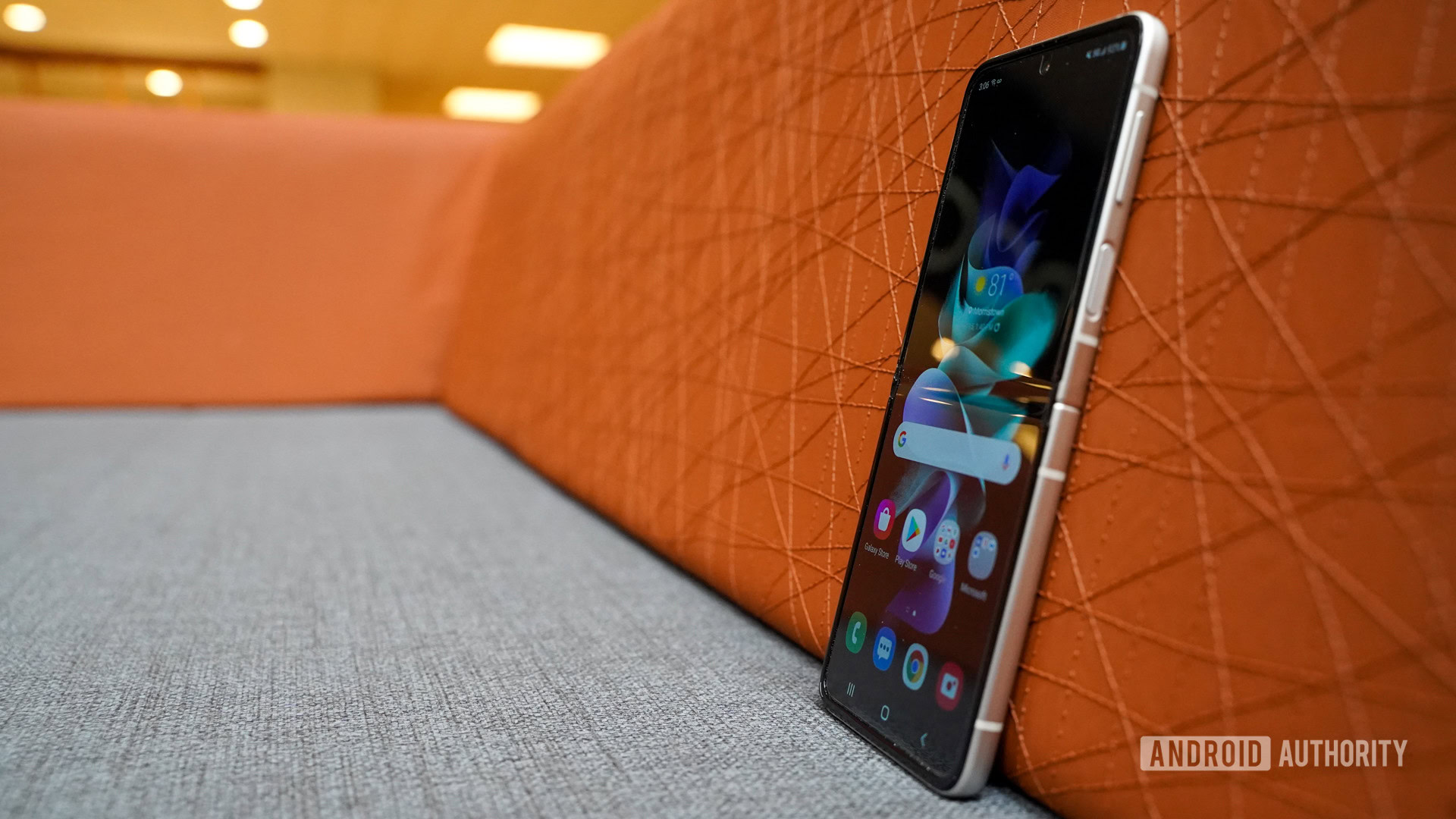
Samsung tweaked the Z Flip 3 in just the right ways to make it an enticing option for regular consumers. It’s the first foldable that feels like an easy recommendation for normal buyers rather than early adopters, as it delivers the whole smartphone experience at an attainable price point. There are still a few shortcomings.
When it comes to pros, Samsung really dialed up the quality of the hardware. The Z Flip 3 is a more robust smartphone thanks to the new glass, aluminum, display cover, and IPX8 rating. The processor does an admirable job, as does the 5G connectivity, and Samsung gave the phone powerful software tools for making use of the folding screen.
Some things are worth taking a chance on and the Samsung Galaxy Z Flip 3 is one of them.
As for the cons, well, the battery and camera are what bug us the most. Nearly any other $1,000 flagship will beat the Z Flip 3 in those clutch categories. It’s all about what compromises you’re willing to make.
There’s no question the Z Flip 3 is an enjoyable smartphone to use. It’s novel compared to the boring slabs of today’s market — and novel sometimes goes a long way. If you’re looking to change up the daily experience of how you use your phone, you can do a lot worse than the Z Flip 3. It’s not a perfect phone and certainly has its share of faults, but some things are worth taking a chance on — and the Samsung Galaxy Z Flip 3 is one of them.
Read next: Samsung Galaxy Z Flip 3 second opinion
However, keep in mind that the Samsung Galaxy Z Flip 4 is also available — learn more here.
Samsung Galaxy Z Flip 3 top questions and answers
The Samsung Galaxy Z Flip 4 is just around the corner, as it’s expected to make its debut sometime this month. That means we can expect to see discounts on the Samsung Galaxy Z Flip 3 soon. Amazon has already kicked things off, offering 15% off the device, which brings the price down to $849. Samsung is still selling the Galaxy Z Flip 3 for $999, but you can get the price down to as low as $349 with the right trade-in. However, we expect the company to drop the regular price once it announces the Galaxy Z Flip 4.
The Samsung Galaxy Z Flip 3 is quite a well-made, durable phone. According to Samsung, it is rated for up to 200,000 folds, which is equivalent to five years of use if you fold and unfold the device 100 times a day. It’s also IPX8 rated for water protection.
The most fragile part of the Galaxy Z Flip 3 is the display. It’s said to be 80% stronger than the one of its predecessor, but it’s still not as durable as the ones you get on “regular” phones like the Galaxy S22, Pixel 6, and others. It feels plasticky and can scratch more easily.
Yes, the Samsung Galaxy Z Flip 3 has an IPX8 rating that protects it against water, but not dust. The phone can sit in up to 1.5m of water for up to 30 minutes without getting damaged.
Yes, there is a crease in the middle of the Samsung Galaxy Flip 3’s display, which is quite visible — especially in a well-lit environment. That’s just the nature of most foldables, unfortunately.
Yes, the Samsung Galaxy Z Flip 3 supports wireless charging, but it’s quite slow at just 10W. It takes more than two hours to get the battery from zero to 100%.
The Samsung Galaxy Z Flip 3 supports both mmWave technology as well as sub-6GHz 5G.
Unfortunately, you don’t get a charger included with your Samsung Galaxy Z Flip 3 purchase.